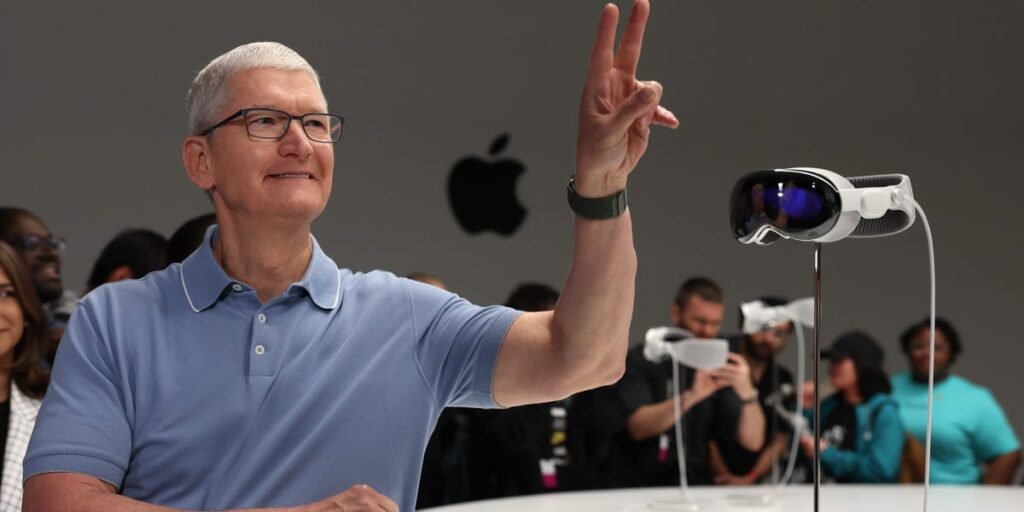Remember the Apple Vision Pro?
Remember? It was a big, ambitious swing from Tim Cook and Co. — a $3,500 headset that lets you experience “augmented reality” — or, if you follow Apple’s demands for branding — “spatial computing.”
Apple first showed off the Vision Pro in the spring of 2023, and then started selling the device in February 2024, and since then … you really haven’t heard much about it.
Unless you’ve seen periodic articles about how the device hasn’t taken off, so developers aren’t building for it, which makes it harder to sell, which makes developers even less likely to build for it, and…
Anyway. Apple won’t come out and say it, but it looks like Apple has more or less forgotten about the Apple Vision Pro, too.
The company has stopped working on a cheaper, lighter version of the headset, Bloomberg reports, so it can focus on a new line of lightweight AI smart glasses — like the kind Meta has already been selling.
Reporter Mark Gurman, who is very wired into all things Apple, says the company still plans to release a new version of the Vision Pro in the near future, featuring a better chip. But a better chip won’t meaningfully change the problems people seem to have with the Vision Pro: It’s expensive, bulky, and no one seems to know what you’re supposed to do with it.
Or in Gurman’s words: “Apple executives have acknowledged the product’s shortcomings in private, viewing it as an overengineered piece of technology.”
All of which seems like a meaningful defeat for Apple: Not only are people not interested in a very high-profile new product from the company — but it’s now chasing after Meta, a company Apple frequently feuds with.
It would be a real twist if Meta, which has never truly succeeded with hardware, may finally pull it off by doing the most Apple-like thing: taking a half-baked product category, and doing a better job of it.
I can certainly imagine many more people buying Meta’s new $800 (and up) Ray-Ban Display glasses than Apple Vision Pros in the near future. (Though I am seeing social media complaints about Meta’s retail rollout, which kicked off this week.)
And it just may be that glasses are indeed the version of face computers that finally take off. Google has also announced plans for glasses that look and operate a lot like Meta’s Ray-Bans, though it has yet to actually start selling them.
But! The only thing we really do know, as of October 2025, is that we have yet to see any sign that lots of people want to wear computers on their faces, no matter what size, shape, or weight they are. The biggest tech companies in the world have been trying to make this happen for years — and have poured tens of billions of dollars into it — and so far it just hasn’t happened.
It’s important to note that the older version of Meta’s Ray-Bans — the ones the company has been describing as a surprise hit — have only sold a couple of million units in their first year and change. That’s essentially a non-event for consumer electronics.
Maybe that will change as the tech gets better, and more robust — the big change in this year’s Ray-Bans is a display on the right lens, so you can get text messages, or maps, or other info from your phone, beamed right into front of your face.
And I continue to think there’s obvious enterprise uses for this tech — imagine the glasses on factory workers, or cops, or doctors, or anyone else who wants information without having to swipe on their phone.
But we’ve yet to see normal people wearing these things in normal, non-work settings. So until/unless we do, it’s hard to declare that anyone has fully won, or lost, this race.

